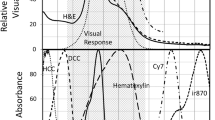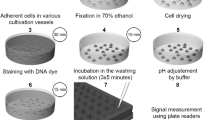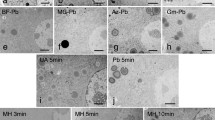Abstract
IN a recent communication1 Goldstein suggests that differential staining of DNA and RNA can be obtained by a number of binary mixtures of basic dyes, of which the dye with the higher molecular weight always should stain DNA and the other one RNA. From the facts presented, however, this can only be taken as a working hypothesis for further investigations, since no evidence of a chemical nature is included. The author obviously takes it for granted that if staining is obtained in a morphological structure which is known or supposed to contain a certain chemical substance, this staining would be proof of specificity of the staining procedure for that substance. Of course this cannot be true. No cell constituent ever consists of pure nucleic acid; nucleic acids in the cell occur combined with basic proteins, whereas the structures in which these are found may contain many other substances, such as structural proteins, carbohydrates, lipids, etc. So, although specificity for a morphological entity may sometimes be claimed, this is still quite different from specificity for demonstration of a chemical compound. That is a main reason why only a very few of the numerous staining procedures of histology and cytology (many of which have been known for long to give colour differentiation between the nucleolus and the main nuclear material) have been recognized as reagents to specific types of substances, if properly applied2–4. In order to prove Goldstein's suggestion that differentiation between DNA and RNA should mainly depend on the relative weights of the cations of the two combined basic dyes, the following experimental evidence is required:
This is a preview of subscription content, access via your institution
Access options
Subscribe to this journal
Receive 51 print issues and online access
$199.00 per year
only $3.90 per issue
Buy this article
- Purchase on Springer Link
- Instant access to full article PDF
Prices may be subject to local taxes which are calculated during checkout
Similar content being viewed by others
References
Goldstein, D. J., Nature, 191, 407 (1961).
Romeis, B., Mikroskopische Technik, fifteenth ed. (Leibniz Verlag Munich, 1948).
Glick, D., Techniques of Histo- and Cytochemistry (Interscience Pub., New York and London. 1949).
Everson Pearse, A. G., Histochemistry, Theoretical and Applied, second ed. (J. and A. Churchill, Ltd., London, 1960).
Schneider, W. C., J. Biol. Chem., 161, 293 (1945).
Kaufmann, B. P., McDonald, M. R., and Gay, H., Nature, 162, 814 (1948).
Kaufmann, B. P., McDonald, M. R., and Gay, H., J. Cell Comp. Physiol., 38, Supp. 1, 71 (1951).
Jacobson, W., and Webb, M., Exp. Cell Res., Supp., 1, 163 (1949).
Duijn, jun., C. van, J. Roy. Micro. Soc., 74, 69 (1954).
Author information
Authors and Affiliations
Rights and permissions
About this article
Cite this article
DUIJN, C. Differential Staining of Nucleic Acids?. Nature 193, 999–1000 (1962). https://doi.org/10.1038/193999a0
Issue Date:
DOI: https://doi.org/10.1038/193999a0
Comments
By submitting a comment you agree to abide by our Terms and Community Guidelines. If you find something abusive or that does not comply with our terms or guidelines please flag it as inappropriate.



